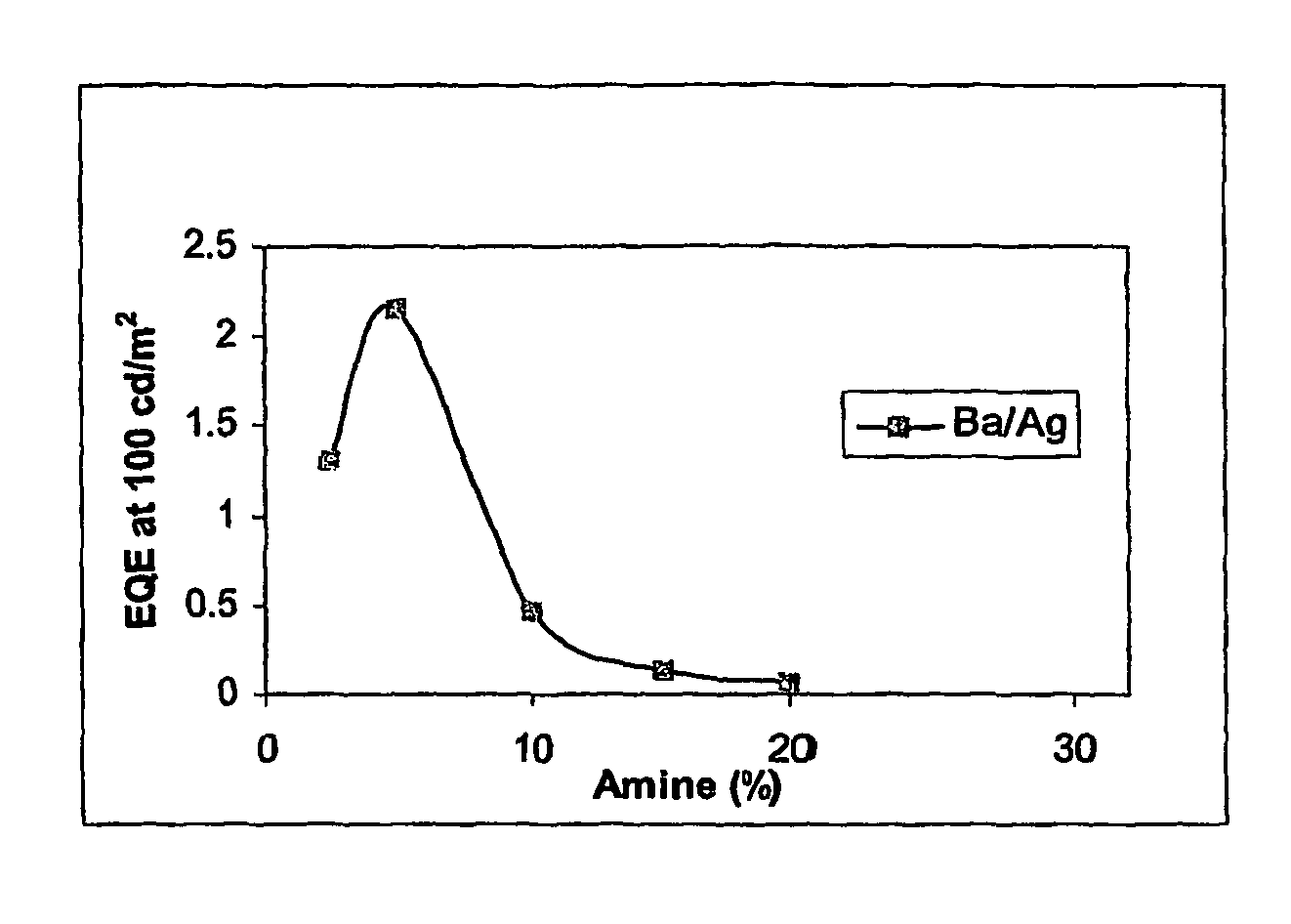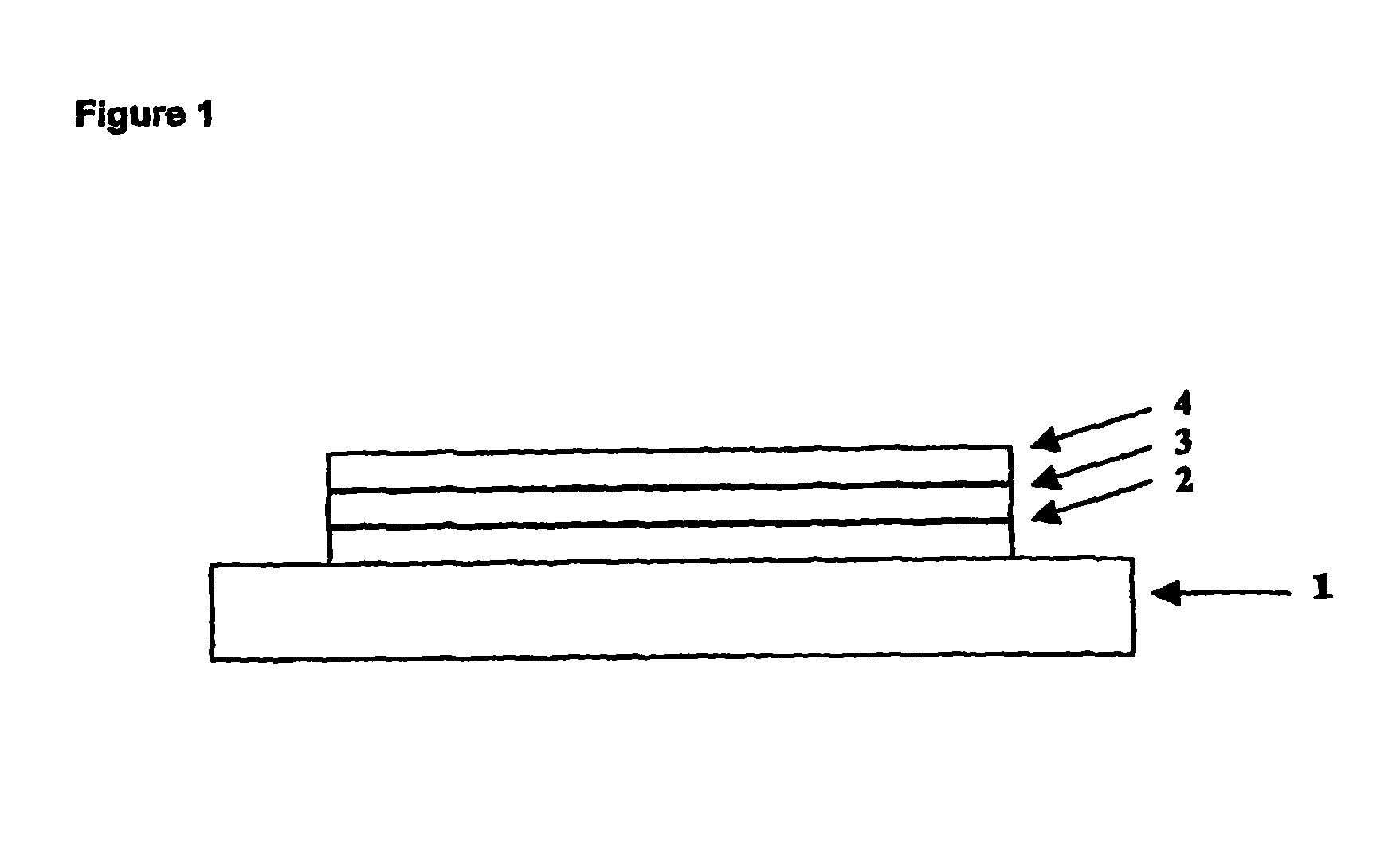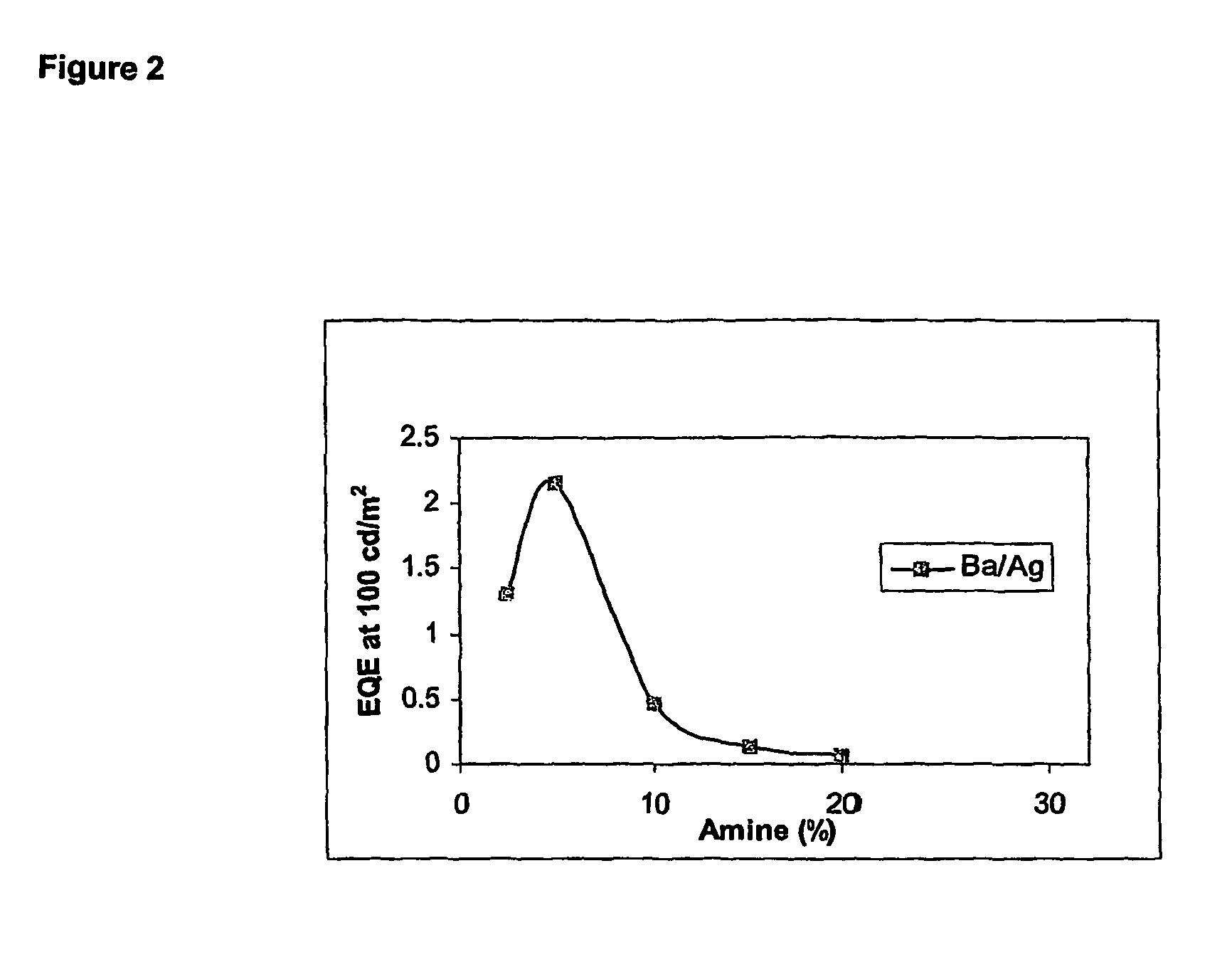Polymers, their preparation and uses
a polymer and polymer technology, applied in the field of organic electroluminescent devices, can solve the problems of low light intensity, poor performance and relatively short lifetime of blue emissive materials known to date, and achieve the effects of reducing the quantity of pfb, avoiding the possibility of phase separation in blends, and improving the lifetime of polymers
- Summary
- Abstract
- Description
- Claims
- Application Information
AI Technical Summary
Benefits of technology
Problems solved by technology
Method used
Image
Examples
examples
Monomer Examples
[0045]Monomers according to the invention were prepared in accordance with the scheme below:
[0046]
Monomer Example M1
2,7-dibromo-9,9-diphenylfluorene
2,7-Dibromofluorenone
[0047]
[0048]In a 3 L flange flask fluorencone (100.006 g, 0.555 mol), phosphorus pentoxide (110.148 g, 0.776 mol) and trimethylphosphate (1200 mL) were mixed. Under mechanical stirring, a solution of bromine (63 mL, 1.23 mol) in trimethylphosphate (200 mL) was quickly added. This clear solution was then heated for 22 hours at 120° C. The mixture was allowed to cool to room temperature, then poured into 3 L of water. When sodium thiosulfate was added (50.045 g) the mixture turned yellow. Stirring was maintained for 1 hour then the yellow solid was filtered. This solid was heated in methanol to remove the mono-brominated compound and gave 176.183 g (98% pure by HPLC, 94% yield).
[0049]1H NMR (CDCl3) 7.73 (2H, d, J 2.0), 7.61 (2H, dd, J 7.6, 2.0), 7.36 (2H, d, J 8.0) 13C NMR (CDCl3) 142.3, 137.5, 135.3, 1...
polymer example p1
[0062]A blue electroluminescent polymer according to the invention was prepared in accordance with the process of WO 00 / 53656 by reaction of 9,9-di-n-ooctylfluorene-2,7-di (ethylenylboronate) (0.65 equivalents), 2,7-dibromo-9,9-diphenylfluorene (0.30 equivalents) and N,N′-di(4-bromophenyl)-N,N′-di(4-n-butylphenyl)-1,4-diaminobenzene (0.05 equivalents) to give polymer P1:
[0063]
Device Example
[0064]Onto indium tin oxide supported on a glass substrate (available from Applied Films, Colorado, USA) was deposited a layer of PEDT / PSS, available from Bayer® as Baytron P® by spin coating. A layer of polymer P1 was deposited over the PEDT / PSS layer by spin-coating from xylene solution. Onto the polymer P1 was deposited by evaporation a cathode consisting of a first layer of barium and a second, capping layer of silver.
[0065]For the purpose of comparison, identical devices were prepared except that molar ratio of PFB repeat units was varied. As can be seen, lifetime at amine contents of 10% or ...
PUM
| Property | Measurement | Unit |
|---|---|---|
| wavelength range | aaaaa | aaaaa |
| wavelength range | aaaaa | aaaaa |
| mol % | aaaaa | aaaaa |
Abstract
Description
Claims
Application Information
 Login to View More
Login to View More - R&D
- Intellectual Property
- Life Sciences
- Materials
- Tech Scout
- Unparalleled Data Quality
- Higher Quality Content
- 60% Fewer Hallucinations
Browse by: Latest US Patents, China's latest patents, Technical Efficacy Thesaurus, Application Domain, Technology Topic, Popular Technical Reports.
© 2025 PatSnap. All rights reserved.Legal|Privacy policy|Modern Slavery Act Transparency Statement|Sitemap|About US| Contact US: help@patsnap.com



